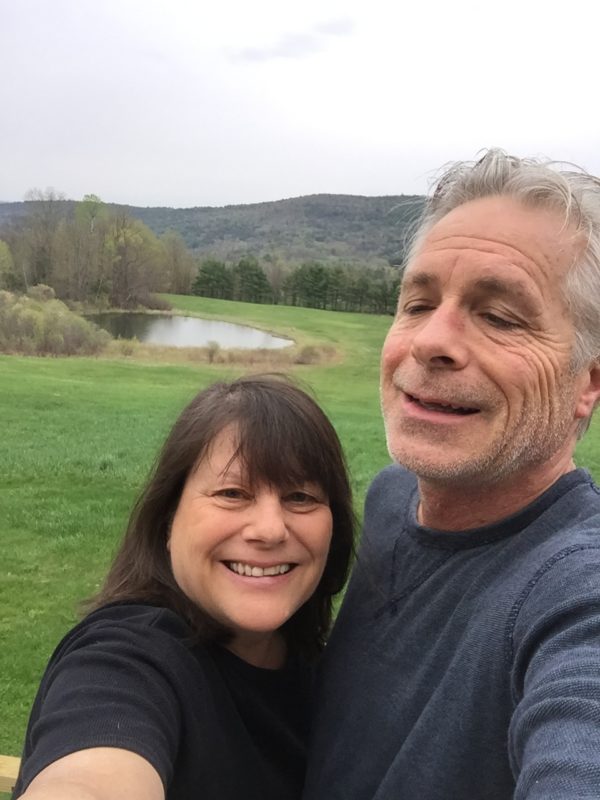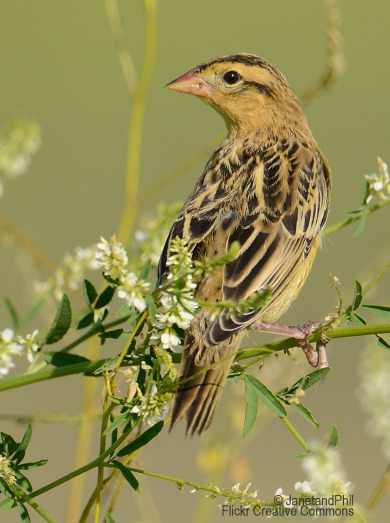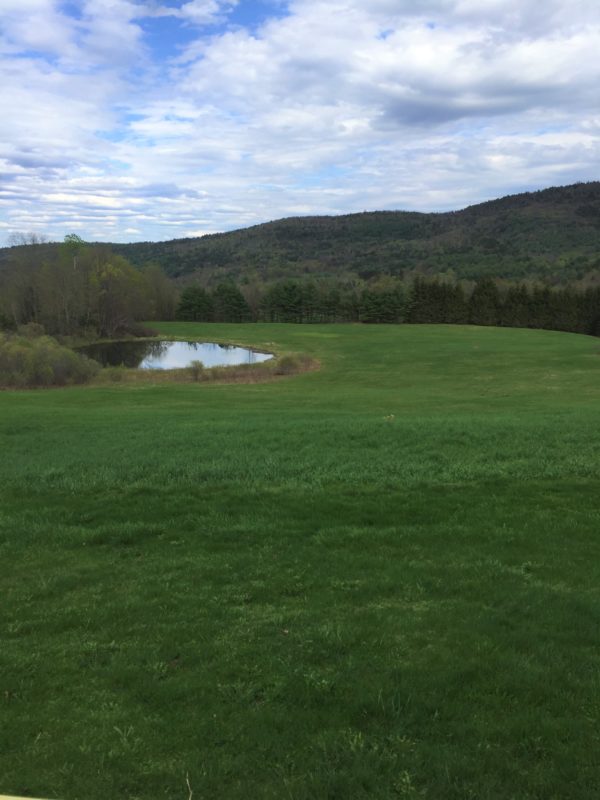This is the first in a series of three profiles that highlight the efforts of landowners to improve grassland bird habitat on private lands. Bobolinks and other grassland-dependent bird species continue to show region-wide declines. Adjusting management practices on privately-held land is key to reversing population declines. – Cathryn Abbott

Julia and Greg Smist of Laughing Brook Farm with their Bobolink field in the background. Photo courtesy of Cathryn Abbott.
The bubbly song of the Bobolink has filled the summer fields of Julia and Greg Smist’s 100-acre farm in Westminster, VT for at least 30 years. Dubbed Laughing Brook, their farm rises above Saxtons River and sports a mix of woodlands, open fields, and wetlands.
A decade or so after buying the farm, Julia noticed that there were fewer Bobolinks in the fields. Her observations echo a grim statistic: Bobolinks have declined by 75% in the region over the past 50 years. After the Smists learned that waiting to mow until the first of August would ensure that ground-nesting Bobolinks would have enough time to raise their young, they enrolled in a USDA program to help offset the cost of delaying mowing on their fields.

Female Bobolink.
Accommodations for grassland birds persist at Laughing Brook, now without help from the USDA program. In addition to holding off on mowing, the Smist family stays out of the fields in June and July to minimize disturbance while birds are nesting. They remove invasive plants and add lime in an effort to keep the fields productive. Julia happily reported that late last summer, their fields were teeming with Bobolinks, with molting adults and young of the year flocking together and flying en masse from the cattail marsh to the grasses and back again.
Central to this success is the relationship between the Smist family and the farmer who cuts their fields. The fields produce 4,000 bales of quality horse hay each season, enough to cover the farmer’s fuel and labor costs. Now, the bobolinks have the time they need to raise their young and the farmer makes a modest profit. Julia is grateful to have found such a good match with a farmer who is willing to work around the needs of the birds. “By making a few adjustments to how we manage our fields,” she explains, “we can make a big difference in how these birds thrive on our property. With so many environmental challenges in the world that we cannot fix, it’s a powerful and satisfying feeling to have an impact. It’s important for us to help Bobolinks, because we can.”

View of the Bobolink field at Laughing Brook Farm. Photo courtesy of Cathryn Abbott.
The Smist family is now working to ensure that their fields continue to produce Bobolinks far into the future. They have consulted a local land trust and plan to place a conservation easement on the property. It is Julia’s fervent hope that the farm remains in the family, but if for some reason down the line it must be sold, she seeks to protect it from being subdivided or developed. As the details of the easement language are being worked out, one thing is certain: Laughing Brook’s hayfields above the Saxtons River will continue to provide a safe haven for nesting Bobolinks.
